Key takeaways:
- Group battles in breakdancing highlight the fusion of creativity, teamwork, and strategy, where dancers not only represent themselves but their entire crew.
- Effective analysis of opponents’ strengths and weaknesses can provide strategic advantages, allowing teams to capitalize on predictable patterns and emotional dynamics.
- Building trust, clear roles, and celebrating individual victories are essential for fostering team cohesion, ultimately enhancing group performance.
- Embracing imperfection and adapting to unexpected situations can lead to memorable and successful moments during battles.
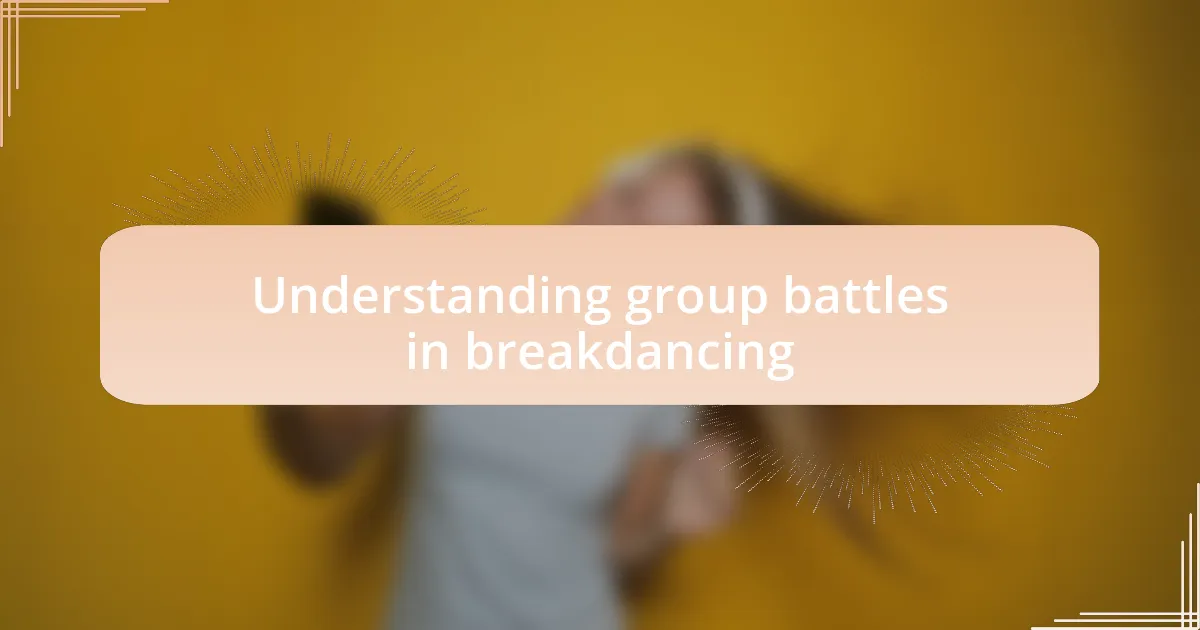
Understanding group battles in breakdancing
Group battles in breakdancing are a vibrant expression of creativity and teamwork. Each dancer represents not just themselves but also the collective spirit of their crew. I often reflect on how the energy shifts when you see dancers exchanging moves, feeding off each other’s skills. It’s almost like a conversation, where every spin and freeze tells a story.
In a group battle, strategy plays a crucial role. The best crews understand their strengths and weaknesses and utilize them effectively. I remember a time when my crew faced a more experienced team; instead of feeling intimidated, we turned that challenge into an opportunity to showcase our unique styles. Have you ever been in a situation where you had to adapt quickly? That adaptability can turn the tide in a battle.
What really captivates me is the emotional rollercoaster of group battles. There’s an undeniable camaraderie that forms as you root for your teammates while also respecting the opponents. I’ve felt that thrill rush through me, competing alongside my crew, sharing in the highs and lows. It’s these moments of connection that make every battle unforgettable.
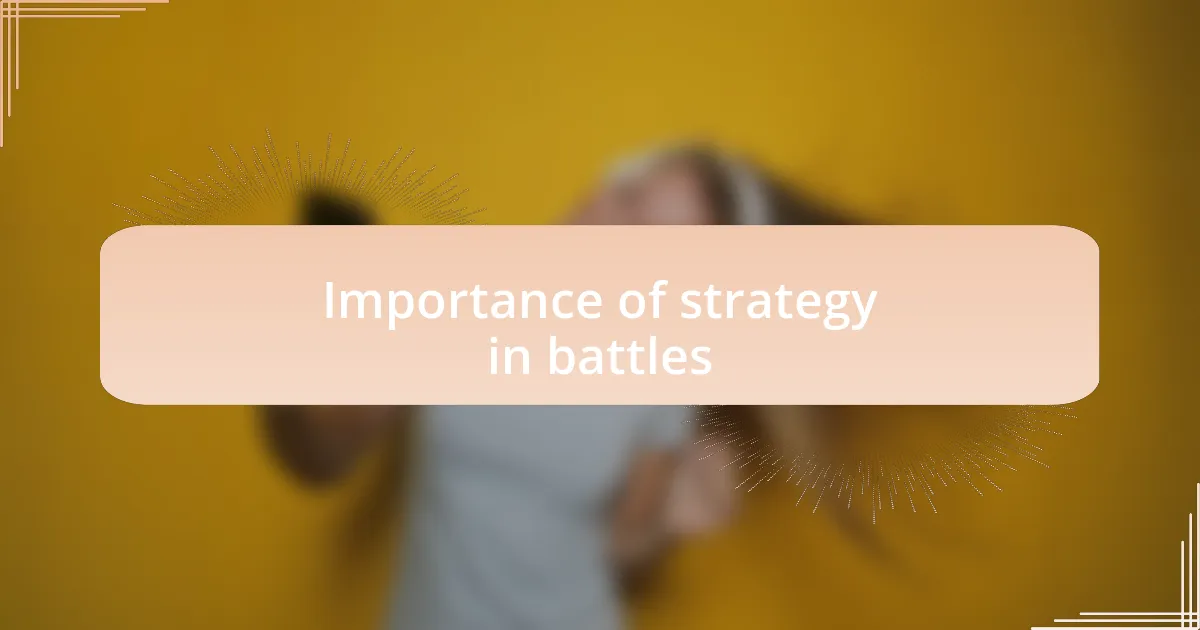
Importance of strategy in battles
In group battles, having a solid strategy can make all the difference. I recall a specific competition where our plan was to build momentum through each dancer’s unique style. This created a sense of anticipation that not only energized our crew but also caught the judges’ attention, illustrating how critical it is to have a game plan that plays to our strengths. Have you experienced moments where a well-thought-out approach led to unexpected success?
Moreover, knowing how to read the vibe in the arena is essential. There was a time when we noticed our opponents becoming overconfident as they showcased their moves. Instead of following their lead, we decided to shift our rhythm, focusing on finesse and synchronization. This strategic pivot surprised them, showing how awareness and adaptability in a battle can turn the tide in your favor.
Every move in a group battle is deliberate when strategy is in place. I remember a battle where we practiced specific formations to highlight each dancer’s skills at the right moment. This strategic coordination made our performance feel polished and intentional. It’s a reminder that strategy isn’t just about executing moves; it’s about creating a cohesive narrative that resonates with the audience and judges alike. Isn’t it intriguing how planning can elevate the entire experience of a battle?
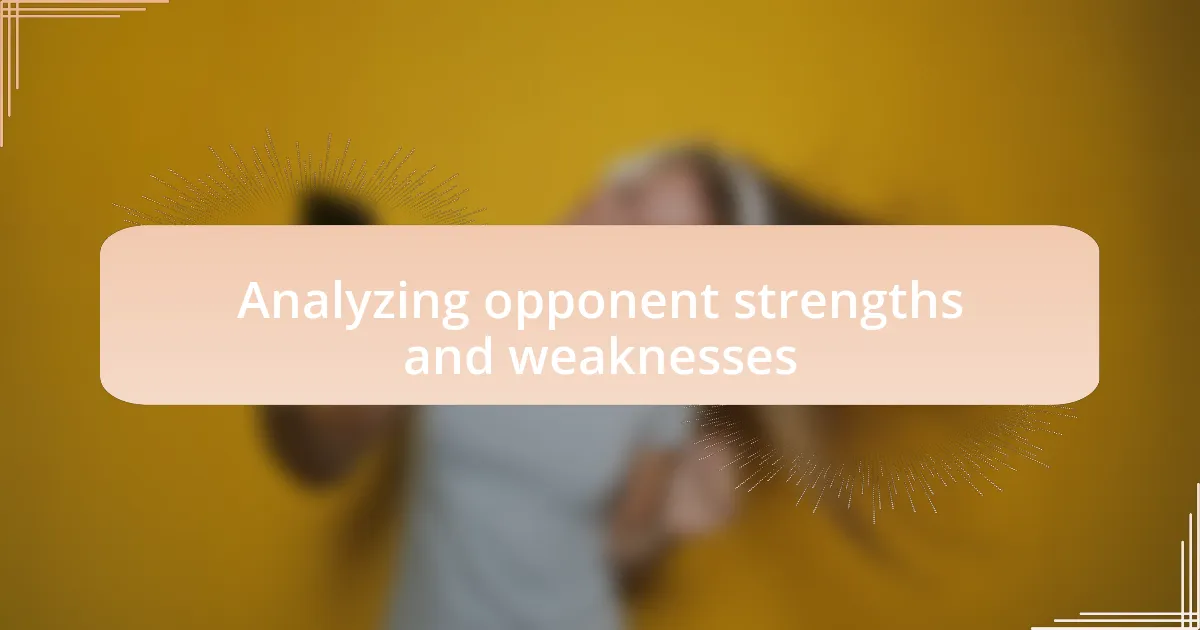
Analyzing opponent strengths and weaknesses
Analyzing an opponent’s strengths and weaknesses can be a game-changer in any battle. I vividly remember a specific competition where we spent time watching our rivals closely. I took note of how one of their standout dancers had incredible speed but lacked intricate footwork. Recognizing this helped us create counter-moves that showcased our versatility. Have you ever spotted a gap in an opponent’s game that you could exploit?
During another battle, we faced off against a team that was consistently impressive with their synchronized routines. However, I sensed that they relied heavily on a few signature moves. I encouraged my crew to capitalize on their predictable patterns and integrate unexpected transitions into our performance. This not only disrupted their flow but also allowed us to introduce our distinct style, ultimately giving us the edge. Reflecting on moments like this reminds me of how crucial it is to not just see but analyze the whole picture.
I’ve also found that emotions play a significant role in how we perceive strengths and weaknesses. There was a round where I felt the opposing crew was riding high on their confidence, almost to a fault. We used their overconfidence against them by introverting our energy and then unleashing our most impressive moves at critical moments. In those situations, understanding not just the physical capabilities but the emotional state of your opponents can define the outcome of a battle. Isn’t it fascinating how insightful observations can shape your strategy and elevate your performance?
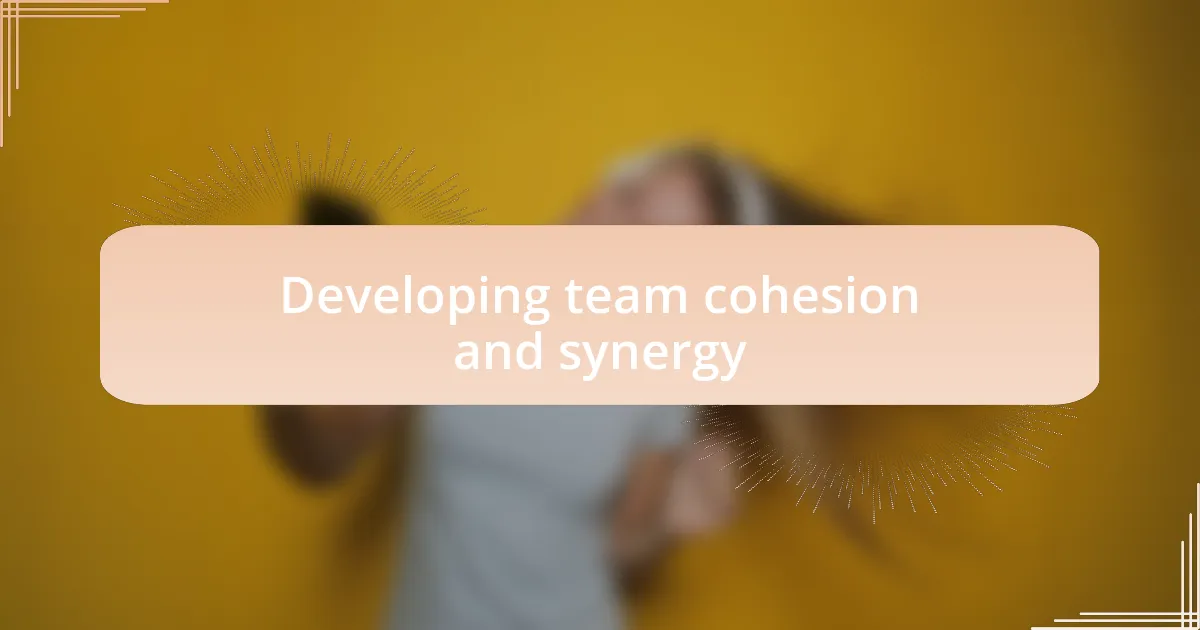
Developing team cohesion and synergy
Building team cohesion is essential for a successful group battle, and I emphasize the importance of trust and communication among dancers. I remember a time when our crew had a misstep during practice, and instead of pointing fingers, we took a moment to regroup and share our thoughts. This open dialogue not only strengthened our bond but also allowed us to make a collective commitment to improve. Have you ever felt that shared experience in your crew made you perform better together?
Encouraging synergy means understanding each member’s unique strengths. There was a moment when I realized one of my teammates had an incredible ability to freestyle while others relied on structured routines. By integrating his spontaneous style into our overall performance, we created an unexpected dynamic that surprised our opponents. Seeing how individuals can shine when their strengths are leveraged makes me wonder – isn’t it empowering to witness collective creativity?
I also believe that celebrating each other’s victories, no matter how small, fuels team cohesion. I recall a jam session where one dancer nailed a tough move, and we erupted in cheers. That moment of recognition ignited a shared energy that transformed our practice into a celebration of talent and hard work. It begs the question: how much stronger could our teams be if we became each other’s biggest fans in every battle?

Personal experiences from past battles
Competing in group battles has always been a mix of adrenaline and camaraderie for me. I vividly remember a particular battle where the atmosphere was electric, and our crew struggled against a highly skilled opponent. Instead of letting the pressure get to us, we rallied together, drawing strength from one another. I can still feel that rush—it was like we were all connected, pushing each other to give our absolute best. Have you experienced that kind of electric synergy when the stakes were high?
There was a moment during another competition when I was gearing up to freestyle but felt the weight of doubts creeping in. I looked over at a teammate who had just finished a powerful solo. Her energy was contagious, and I realized that by stepping out of my comfort zone, I might contribute to the vibe she had created. So, I took a deep breath and let go, and our performance became this beautiful blend of her intensity and my spontaneity. Isn’t it fascinating how one courageous act can transform the entire performance?
Reflecting on those moments, I understand how crucial it is to embrace imperfection. During one battle, our choreography went off-script, but instead of panicking, we improvised in sync. We shared smiles and exchanged glances, and what started as a mishap turned into a spontaneous highlight that the audience loved. It makes me ponder: do we sometimes overlook the magic that can happen when we allow ourselves to be vulnerable together?
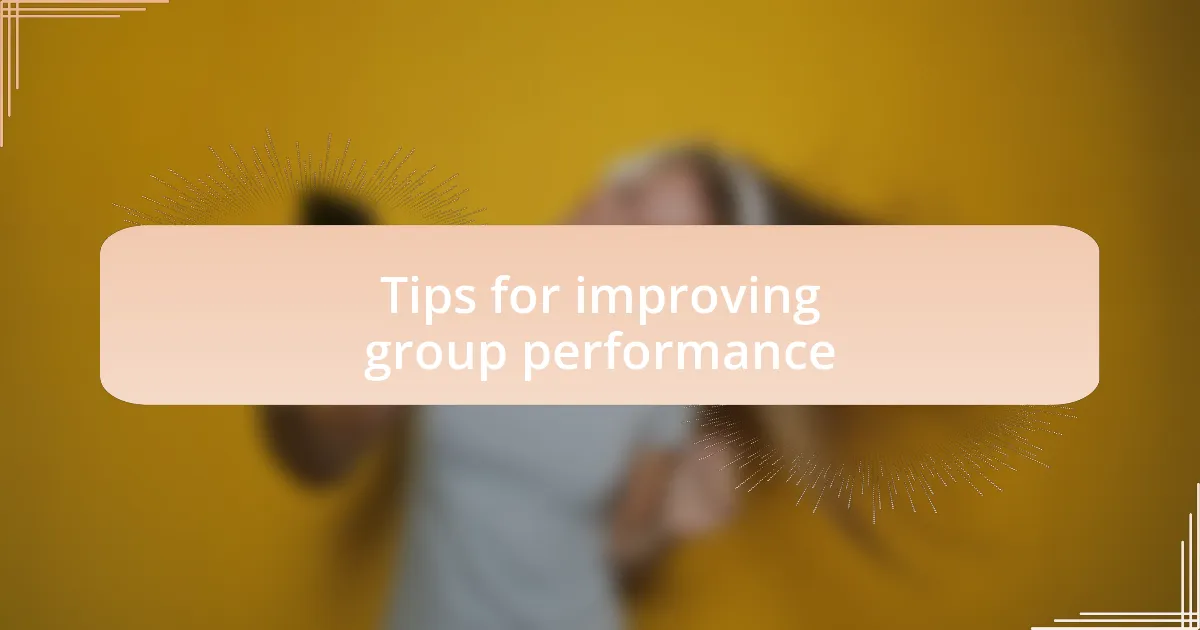
Tips for improving group performance
One key to enhancing group performance lies in building trust among team members. I recall a time when our crew had a practice session focused solely on communication. We paired up and shared our individual struggles and expectations, which made us more open and supportive. This vulnerability not only strengthened our bond but also made it easier for us to give constructive feedback. How often do we take the time to truly understand our teammates?
Another effective strategy is to establish clear roles and strengths within the group. In one battle, I noticed that our best performances came when everyone had a defined part to play. By collaborating and assigning tasks based on individual skills, we could capitalize on our strengths. For instance, when a teammate shined during footwork, it motivated others to step up elsewhere. Does your crew recognize everyone’s unique talents?
Lastly, I believe regular team practice can’t be overstated. There was a period when we committed to rehearsing together every week, and it transformed our dynamics. During these sessions, we explored new moves and honed our routines, but more importantly, we created a relaxed atmosphere where creativity thrived. Have you ever noticed how much more connected a group feels after spending time working together?